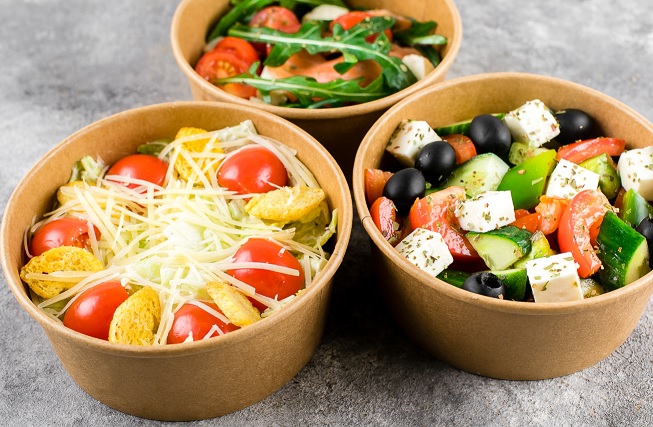What Is a Cloud Kitchen?
Contents
Grubtech.com – “This new model is referred to as a ‘Micro Cloud Kitchen’. As online ordering increases and food deliveries see a boost like never before, micro cloud kitchens allow restaurants to leverage their existing resources such as equipment, supply chain and staff, to create additional delivery-only virtual brands and expand their offering.”
Developing technology and especially the conditions created by the new normal have led to the development of many new business lines while changing and transforming the way they do business in their existing industry. One of the sectors where this transformation was most felt was the F&B industry.
With the intensifying competition and the continuous development of technology, the dining area has changed for a long time. Increasing demand for online food delivery, high real estate costs, and declining profits have led to the birth of only delivery restaurants or cloud kitchens. A few years ago, cloud kitchens started to spread in many countries. It is known by different names such as ghost kitchen, virtual kitchen, shadow kitchen, and dark kitchen.
Think of it as a restaurant with no shared workspace or store to eat in. Cloud kitchens, also known as virtual kitchens, subvert the perception of traditional dining spaces by removing dining areas and ornate decor. Instead, they serve as large kitchens for restaurants to prepare meals for delivery to customers.
Numerous restaurants can operate in the same phantom kitchen, working in the same facility, or by dividing the space into separate areas. A business model has been developed in which a professional kitchen with different names is shared by various businesses or chefs. These businesses and business models, which only offer service as a package service, have gained great popularity with the effect of the pandemic.
For example, a restaurant operator who has only a delivery kitchen and serves Asian food could also start serving Greek foods. But instead of adding Greek food to his current group’s menu, he could start using a different brand that only sells Greek food from the same cuisine that makes deliveries. You can access world cuisines, all foods through a single application this offers a very wide menu for the person who wants to order food.

To summarize, cloud kitchens are centrally licensed commercial food production facilities where one or two to dozens of restaurants rent space to prepare menu items optimized for delivery. A restaurant can operate multiple brands or virtual restaurants, all operating under one roof, or the kitchen can be operated like an incubator shared by different suppliers. Imagine a large warehouse with numerous stations (mini restaurants) with stainless steel prep tables, hood vents, cookers, ovens, and sinks, each with its own orders directly from customers.
What Are the Benefits of Cloud Kitchens for Businesses?
Now we know what cloud kitchens are and what are their advantages compared to the traditional restaurant business model. A cloud kitchen business model can be very useful for getting into a larger size without incurring too much additional cost.
Low Expenses
One of the biggest challenges for restaurant operators in compliance with staff salaries and employment laws. Cloud kitchens, on the other hand, can make easier use of on-demand labor, and you don’t have to worry about waiter and service staff fees.
The barrier to entry is much lower for cloud kitchens compared to traditional restaurants. The cloud kitchen is theoretically in prime locations with high pedestrian traffic, in-store operations, floor space to sit, or high rents – eliminating any upfront need for a lower fee.
It is also possible to save component costs by leveraging economies of scale. For example, placing larger orders for several different brands operating from the same kitchen can only be delivered. These savings can be passed on to the consumer to give virtual restaurants a competitive advantage over traditional restaurants.
More Efficiency
By using specially built areas and optimizing their processes specifically for delivery, cloud kitchens can work very efficiently. If you run multiple brands from a kitchen, you can batch prepare ingredients for several different menus and design the kitchen to prioritize cooking speed and delivery to food delivery drivers.
Designed with technology in mind, cloud kitchens can optimize processes based on consumer behavior, ordering, and staff planning. The cloud kitchens menu can also be tailored to demand and optimize the model over time, increasing margins. It also allows you to view orders from many food applications in a single interface using a single screen.
It is not limited to the actual location, which means you can change the menu or working time according to business needs without much affecting customer satisfaction. This can also help reduce food waste because you can order and prepare decisions smarter.
In fact, virtual restaurants are very adaptable, and you can even create a brand in just one season. For example, it can create a healthy salad brand in the summer and a hearty chopped meat concept in the winter, allowing you to take advantage of the seasonal demand for any type of food without any hassle.
Digital Brand Awareness Without High Marketing Expenses
Virtual restaurant brands can quickly emerge through delivery applications without having to do their own marketing. Although the new virtual restaurant concept should meet the visibility of the delivery implementation business model, the overall cost of doing this may be lower, especially if you have the creativity to build a brand.
How to Setup a Cloud Kitchen?
You may visit grubtech’s website for detailed information. Founded in 2019 in Dubai, they are a young, dynamic, and well-versed team of engineers, data scientists and industry leaders, passionate about bringing innovative technologies to restauranteurs and cloud kitchen operators across the globe. They have Zomato, Deliveroo, Careem Now, and Talabat integrated cloud kitchen solution. Grubtech is also in the process of integrating with other food aggregators across the region.